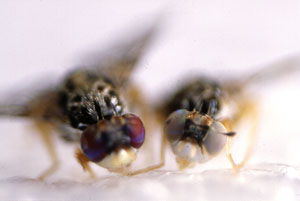Power Function Applications
Mutation-Selection Balance
Use the equilibrium frequency allele a to answer the following questions: Approximate the equilibrium frequency of allele a. Describe what happens to allele a under strong selective pressure. Describe what happens to the equilibrium frequency of allele a as the rate of mutation declines. Describe what happens to the equilibrium frequency of allele a as the selective pressure decreases. Determine the equilibrium frequency of allele a when the rate of mutation quadruples. Determine the equilibrium frequency of allele a as the selective pressure doubles.
***** |
||||
The Biology Project > Biomath > Power Functions > Applications > Mutation-Selection Balance
The Biology Project
Department
of Biochemistry and Molecular Biophysics
The University of Arizona
March 2007
Contact the Development Team
http://www.biology.arizona.edu All contents copyright © 2007. All rights reserved.

